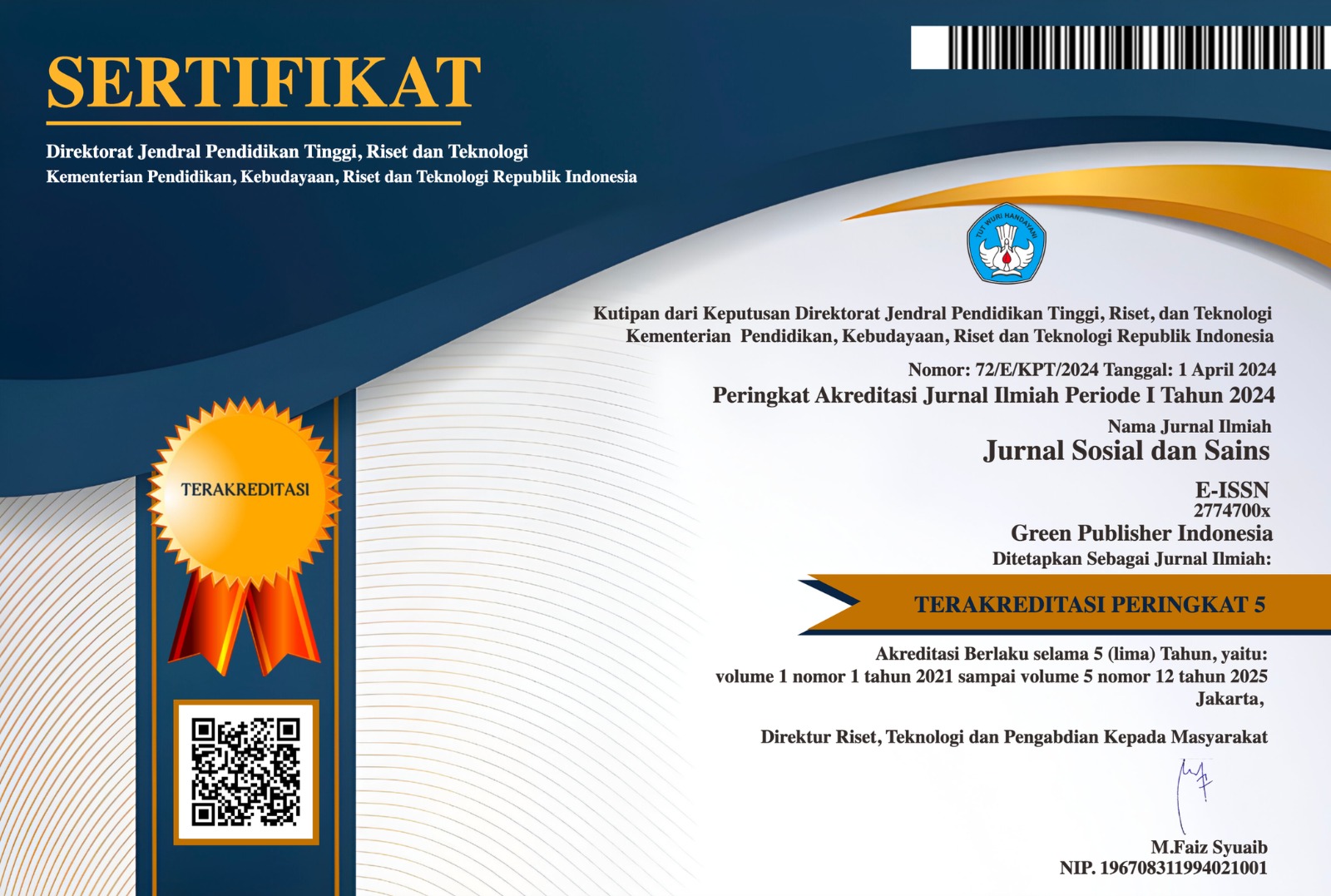Singh's Fuzzy Time Series Forecasting Modification Based on Interval Ratio
DOI:
https://doi.org/10.59188/jurnalsosains.v4i3.1248Keywords:
Fuzzy time series, interval ratio, Alabama enrollment forecastingAbstract
Background: One forecasting method that is often used is time series forecasting. The development of applied mathematics has encouraged new mathematical findings that led to the birth of new branches of mathematics, one of which is fuzzy.
Purpose: The objectives of the study, namely forecasting, fuzzy set, time series, fuzzy time series, fuzzy time series Singh, interval ratio and measurement of accuracy level.
Method: This research method applies Chen's fuzzy time series in the section of determining the universe of talk you to the fuzzification of historical data and in the part of forecasting results obtained through a heuristic approach by building three forecasting rules, namely Rule 2.1, Rule 2.2, and Rule 2.3 to obtain better results and affect very small AFER values. As well as making modifications to the interval partition section using interval ratios to be able to reflect data variations.
Results: Based on the calculation of AFER values for order 2, order 3, and order 4 respectively obtained at 1.06389%, 0.689368%, and 0.711947%. Therefore, it can be said, Singh's fuzzy time series forecasting method based on the ratio of 3rd-order intervals is better than that of 2nd-order and 4th-order.
Conclusion: Based on the results of research and discussion that has been carried out, it can be concluded that Singh's fuzzy time series forecasting method has the same algorithm as fuzzy time series forecasting. Singh's fuzzy time series forecasting method based on interval ratios applies fuzzy time series and Singh forecasting. Singh's fuzzy time series forecasting modification accuracy rate based on interval ratios produces excellent forecasting values according to evaluator average forecasting error rate (AFER).
Published
How to Cite
Issue
Section
License
Copyright (c) 2024 Erikha Feriyanto, Farikhin Farikhin, Nikken Prima Puspita

This work is licensed under a Creative Commons Attribution-ShareAlike 4.0 International License.
Authors who publish with this journal agree to the following terms:
- Authors retain copyright and grant the journal right of first publication with the work simultaneously licensed under a Creative Commons Attribution-ShareAlike 4.0 International (CC-BY-SA). that allows others to share the work with an acknowledgement of the work's authorship and initial publication in this journal.
- Authors are able to enter into separate, additional contractual arrangements for the non-exclusive distribution of the journal's published version of the work (e.g., post it to an institutional repository or publish it in a book), with an acknowledgement of its initial publication in this journal.
- Authors are permitted and encouraged to post their work online (e.g., in institutional repositories or on their website) prior to and during the submission process, as it can lead to productive exchanges, as well as earlier and greater citation of published work.








